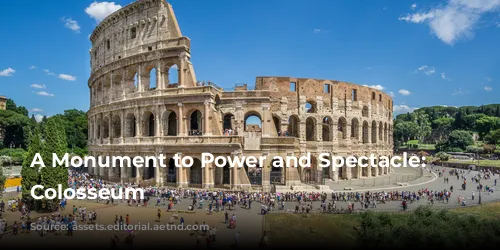The Colosseum, more formally known as the Flavian Amphitheater, stands as a testament to the grandeur and spectacle of ancient Rome. Beyond its iconic status, it represents a complex interplay of politics, engineering, and social hierarchy. Let’s delve deeper into the fascinating history of this architectural marvel.
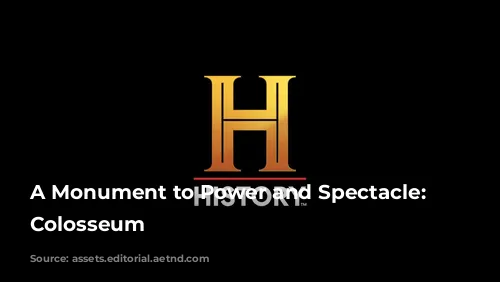
A Symbol of Resurgence
The Flavian Dynasty, led by Emperor Vespasian and his sons Titus and Domitian, embarked on an ambitious rebuilding program to restore Rome after years of turmoil. In 70 A.D., Vespasian commissioned the construction of a new amphitheater in the heart of the city, funded by the spoils of war from the conquest of Jerusalem. This grand project, completed ten years later, served as a powerful symbol of Rome’s resurgence and the Flavian Dynasty’s dominance.
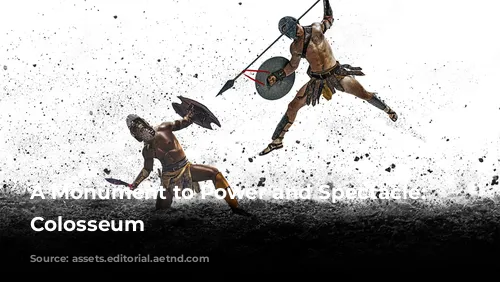
An Architectural Triumph
The Colosseum was not just a symbol of power but also an engineering marvel. It was the largest and most complex permanent amphitheater of the ancient world, constructed with a blend of materials including concrete, travertine, marble, and timber. Rising to a height of 157 feet—comparable to a 15-story building—it could accommodate an estimated 50,000 to 80,000 spectators. Its impressive size and design showcased the ingenuity of Roman engineering.
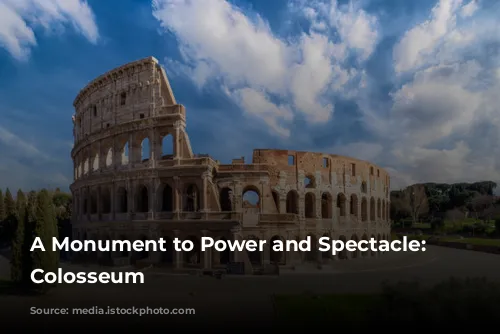
Erasing Nero’s Legacy
The Colosseum’s construction was also deeply intertwined with the Flavian Dynasty’s desire to erase the legacy of their predecessor, Emperor Nero. Built on the site of Nero’s extravagant estate, the Domus Aurea, the Colosseum effectively replaced Nero’s opulent structures with a monument that celebrated the Flavian Dynasty’s authority and vision for Rome. This was a deliberate strategy to reshape the city’s landscape and establish their own mark on history.
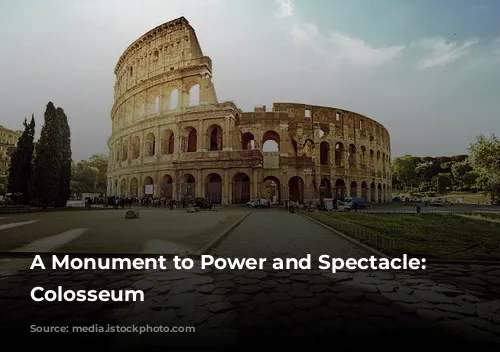
Reinforcing Social Order
The Colosseum’s design and function also served to reinforce the rigid social hierarchy of ancient Rome. Seating was carefully organized according to social status, wealth, and gender. The most prestigious seats, closest to the arena, were reserved for the Emperor and the elite senatorial class. The Equestrian order, comprised of merchants, artisans, and bureaucrats, occupied the next tier. The remaining 95% of Rome’s population, including women, foreigners, and the poor, were relegated to the upper levels.
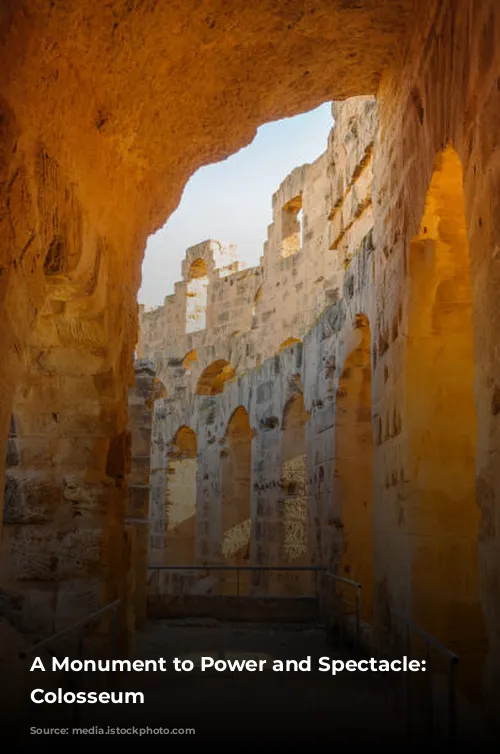
A Symphony of Organization
The Colosseum’s layout was designed to ensure an orderly flow of spectators. Four grand entrances served political and religious leaders, while 76 smaller entrances accommodated ordinary citizens. Corridors separated social groups, preventing mingling and maintaining social order. Despite the stratified seating arrangement, the Colosseum’s elliptical architecture provided all attendees with a clear view of the action in the arena.
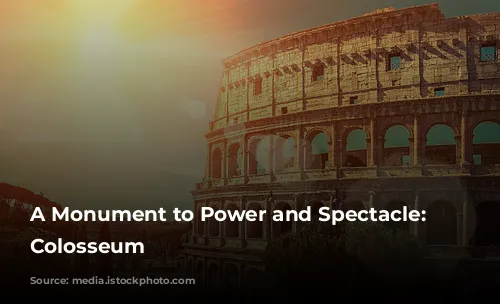
Building on the Past
The Colosseum’s design drew inspiration from earlier architectural traditions. While temporary wooden amphitheaters were common in ancient Rome, the Colosseum represented a significant evolution, incorporating elements from Greek theaters and earlier permanent stone structures. Its grand design featured impressive columns, arches, and barrel vaults, showcasing the architects’ mastery of form and function.

Innovation in Concrete
The Colosseum’s most significant innovation was its extensive use of concrete. This revolutionary material enabled the construction of a massive and enduring structure. The Colosseum stands as a testament to the Romans’ ingenuity and expertise in concrete construction, a technology that would profoundly influence architecture for centuries to come.
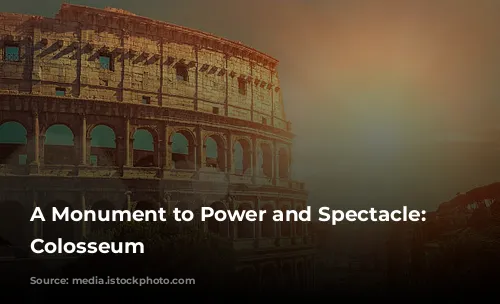
Standing the Test of Time
The Colosseum’s longevity is a testament to its robust construction. Built on a foundation of solid concrete, the structure has endured for over 2,000 years, defying the passage of time. The Colosseum’s foundations were carefully designed to withstand the challenges of its wetland location, ensuring stability and resilience.
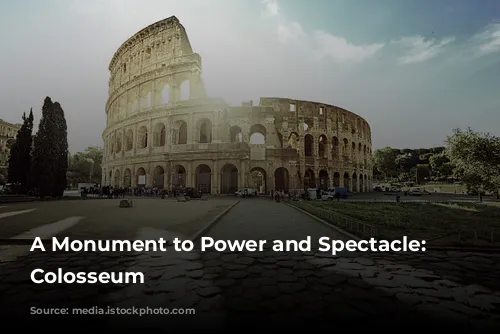
Engineering Wonders
The Colosseum incorporated several sophisticated engineering features. An elaborate drainage system facilitated the staging of mock sea battles in the arena. A retractable awning provided shade for spectators, while a complex network of chambers and tunnels beneath the arena floor housed props, scenery, and performers. The Colosseum’s ingenious system of trap doors, pulleys, and lifts enabled dramatic entrances and exits for combatants and scenery, adding to the spectacle.
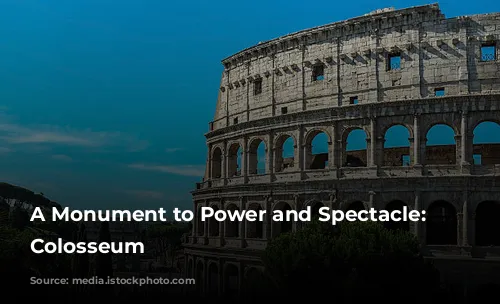
The Price of Power
While the exact cost of building the Colosseum remains unknown, scholars believe that a portion of its funding was derived from the spoils of war, specifically the loot taken from the Jerusalem Temple during the First Roman-Jewish War. This practice highlights the complex relationship between power, conquest, and the construction of monumental structures.
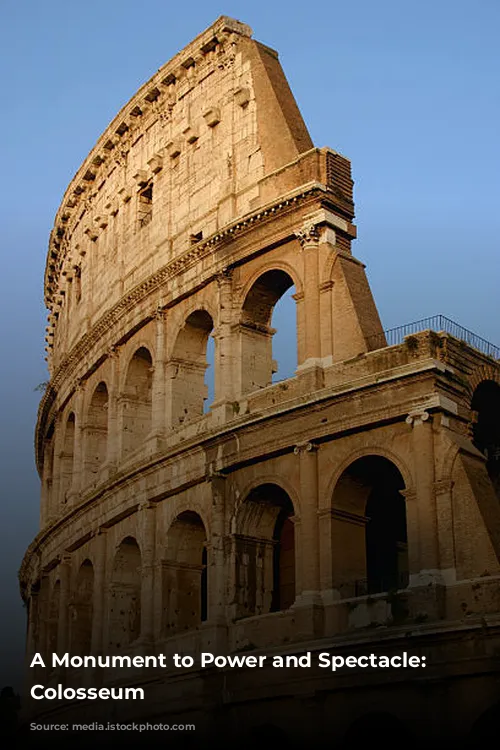
The Labor Behind the Colosseum
The labor force that built the Colosseum has been the subject of debate. The traditional view suggests that the majority of the workforce consisted of Jewish slaves captured during the Siege of Jerusalem. However, more recent scholarship suggests that the source of labor is not definitively known, and relying solely on the Jewish slave hypothesis is inaccurate. While the Colosseum’s construction likely involved a significant number of slaves, it is crucial to avoid generalizations and seek a more nuanced understanding of the labor force.
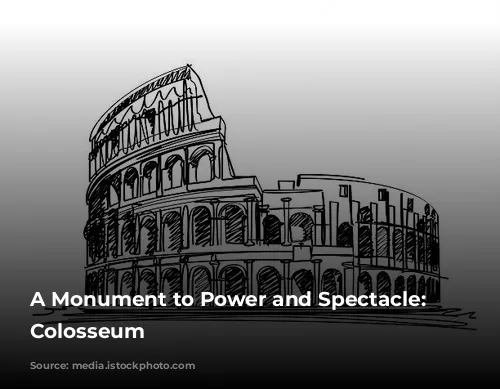
A Legacy of Spectacle
The Colosseum is more than just a historical site; it has profoundly influenced the design and construction of modern sports stadiums. The Colosseum’s use of arches for structural support, its elliptical shape, and its sophisticated system for controlling spectator flow remain key elements in the design of contemporary sports arenas. This legacy demonstrates the enduring impact of the Colosseum’s architecture and engineering on the built environment.
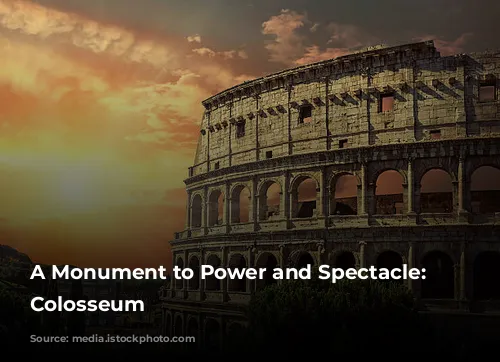
Conclusion
The Colosseum stands as a powerful symbol of ancient Rome’s ambition, ingenuity, and social structure. Its construction represents a complex interplay of political power, engineering prowess, and social order. As a testament to the Flavian Dynasty’s ambition and a testament to the enduring power of Roman architecture, the Colosseum continues to fascinate and inspire. Its architectural innovations and its legacy as the progenitor of modern sports stadiums underscore the enduring impact of this iconic structure on the course of history.
